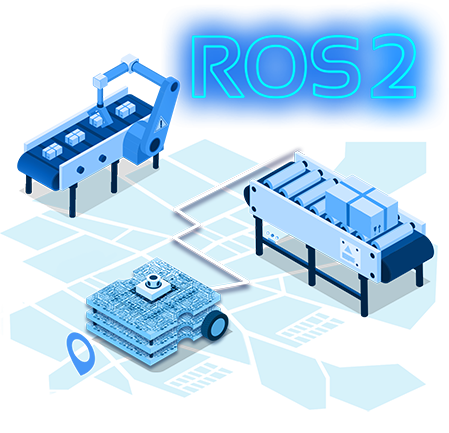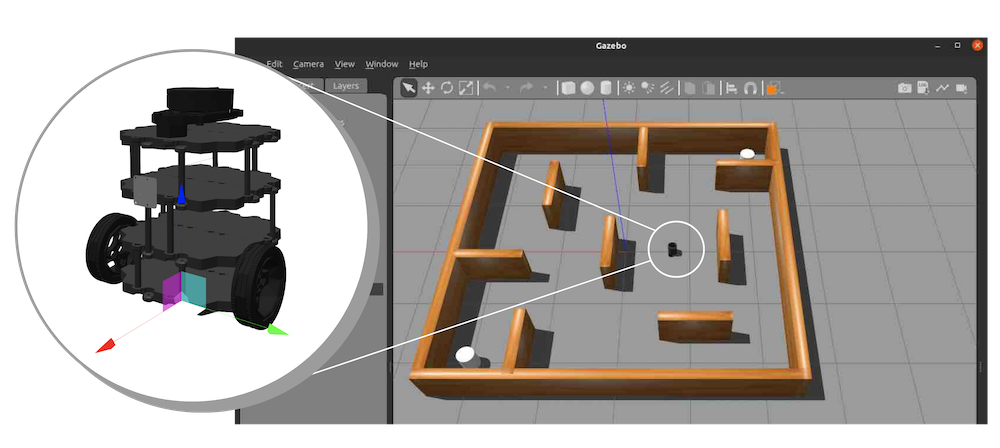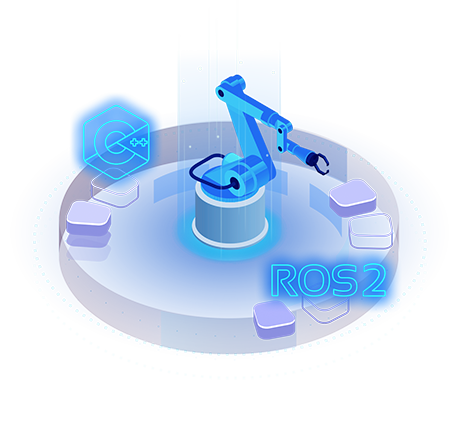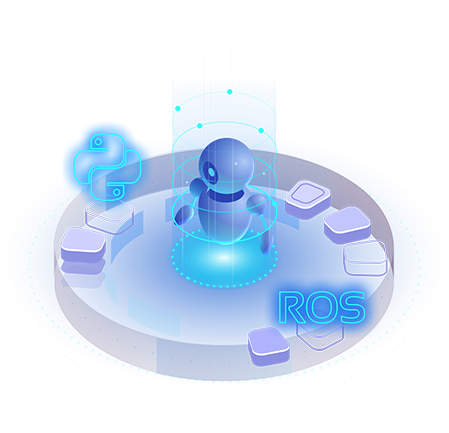Course
ROS2 Navigation (Galactic)
Learn how to make robots autonomously navigate using Nav2

Course overview
Learn how to use the ROS2 Navigation (Nav2) package to make a robot autonomously navigate. You will understand how all the parts work together so you can adapt them to your robot.
What You Will Learn
How to build a map of the environment
How to localize a robot in a map of the environment
Path Planning from an initial position to the desired goal
Obstacle avoidance using Costmaps
Navigation Lifecycle Manager
How Behavior Trees influence Nav2
Work with Managed Nodes in ROS2
100% Online
Intermediate Level
Approx. 40 hours to complete
Simulated Robot Used
TurtleBot3 – Burger Simulation

TurtleBot3 is a small, affordable, programmable, ROS-based mobile robot used in education, research, hobbies, and product prototyping. The goal of TurtleBot3 is to dramatically reduce the size of the platform and lower the price without sacrificing functionality and quality, while offering expandability.
Hands-on Projects
Mapping
Create a map of a house using the robot’s sensors and cartographer package.
Localization
Localize the TurtleBot3 robot in a map using the amcl package.
Path Planning
Make the robot autonomously navigate to a goal position.
Project
Create your own package for a robot to fully navigate autonomously within a house.
Syllabus
Unit 1: Introduction to ROS2 Navigation
Navigation is one of the key abilities of a robot. Navigation can help to move a robot from one point to another, avoiding obstacles and without hitting anyone. But how does a robot know where it is, where it has to go, and how to avoid hitting anything on the way? There’s no end to your curiosity. We’ll learn all these answers in this course.
Topics covered in this unit are :
- How robots Navigate?
- Demo of ROS2 navigation
- What is ROS2 Navigation stack?
- Different components of ROS2 Navigation stack
Unit 2: How to build a map
In this unit, you’ll be learning about an important concept in navigation, i.e how to build a map.
Topics covered in this unit are :
- What is a map in ROS?
- How to build a map in ROS2
- SLAM
- Cartographer
Unit 3: How to localize the robot in the environment
In this unit, you’ll be learning an important concept in navigation, i.e. how to build a map.
Topics covered in this unit are :
- What is meant by Localizing a robot in the environment?
- How to do localization in ROS2
- Providing map tp map_server
- AMCL
Unit 4: How to do Path Planning in ROS2
In this unit, you’ll be learning an important concept in navigation, i.e. how to build a map.
Topics covered in this unit are:
- What is meant by Path Planning
- How to do Autonomous Navigation in ROS2
- How to do Path Planning in ROS2
- Controller in ROS2 Navigation
- Planners in ROS2 Navigation
- Recoveries in ROS2 Navigation
Unit 5: How Obstacle Avoidance happens in ROS2
In this unit, you’ll be learning an important concept in navigation, i.e. how to build a map.
Topics covered in this unit are:
- What is Costmap 2D?
- Global Costmap
- Local Costmap
- Layers of costmap
Final Course Project
Ready to have this ROS skill?
Start learning online quickly and easily

Start Learning Now.
RESULTS GUARANTEED

![mapping [ROS Q&A] 168 - What are the differences between global and local costmap](https://www.theconstruct.ai/wp-content/uploads/2021/01/mapping.png)
![localization [ROS Q&A] 168 - What are the differences between global and local costmap](https://www.theconstruct.ai/wp-content/uploads/2021/01/localization.png)
![path_planning [ROS Q&A] 168 - What are the differences between global and local costmap](https://www.theconstruct.ai/wp-content/uploads/2021/01/path_planning.png)
![project (1) [ROS Q&A] 168 - What are the differences between global and local costmap](https://www.theconstruct.ai/wp-content/uploads/2021/01/project-1.png)


